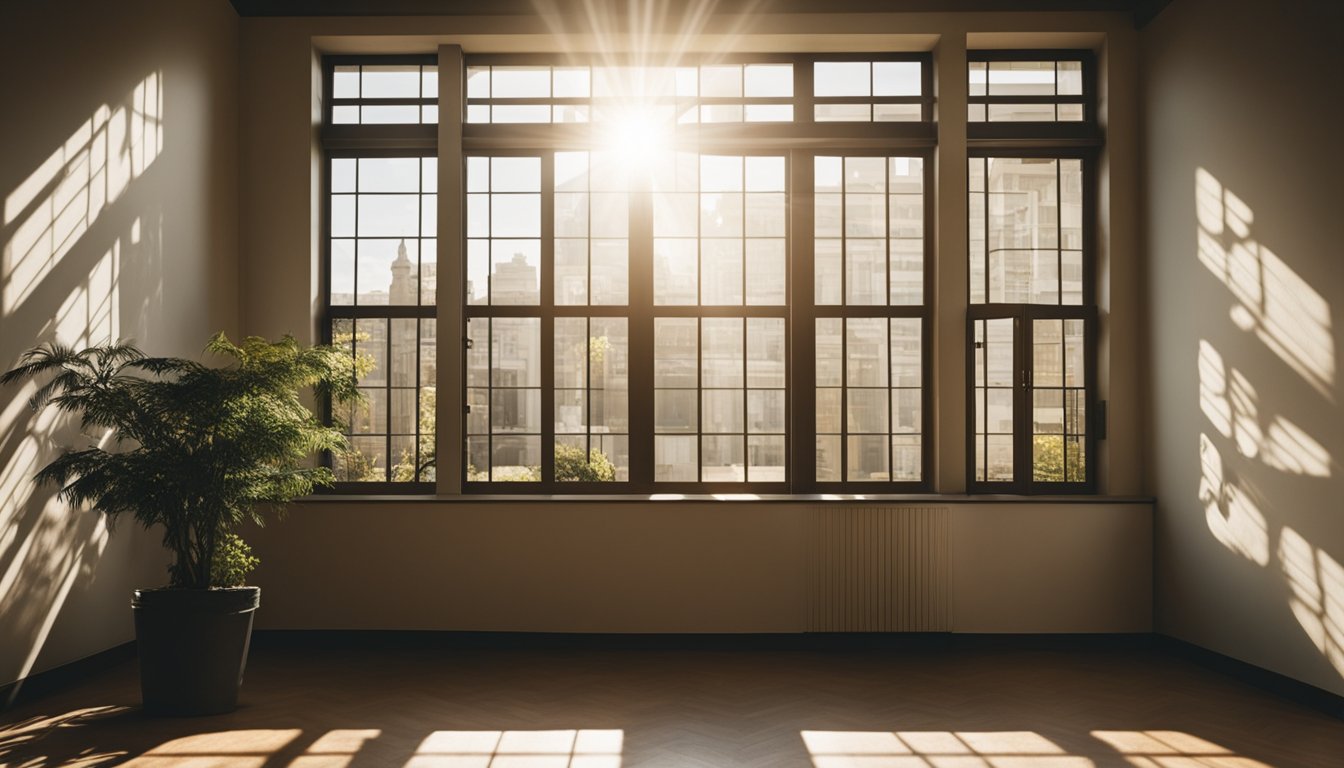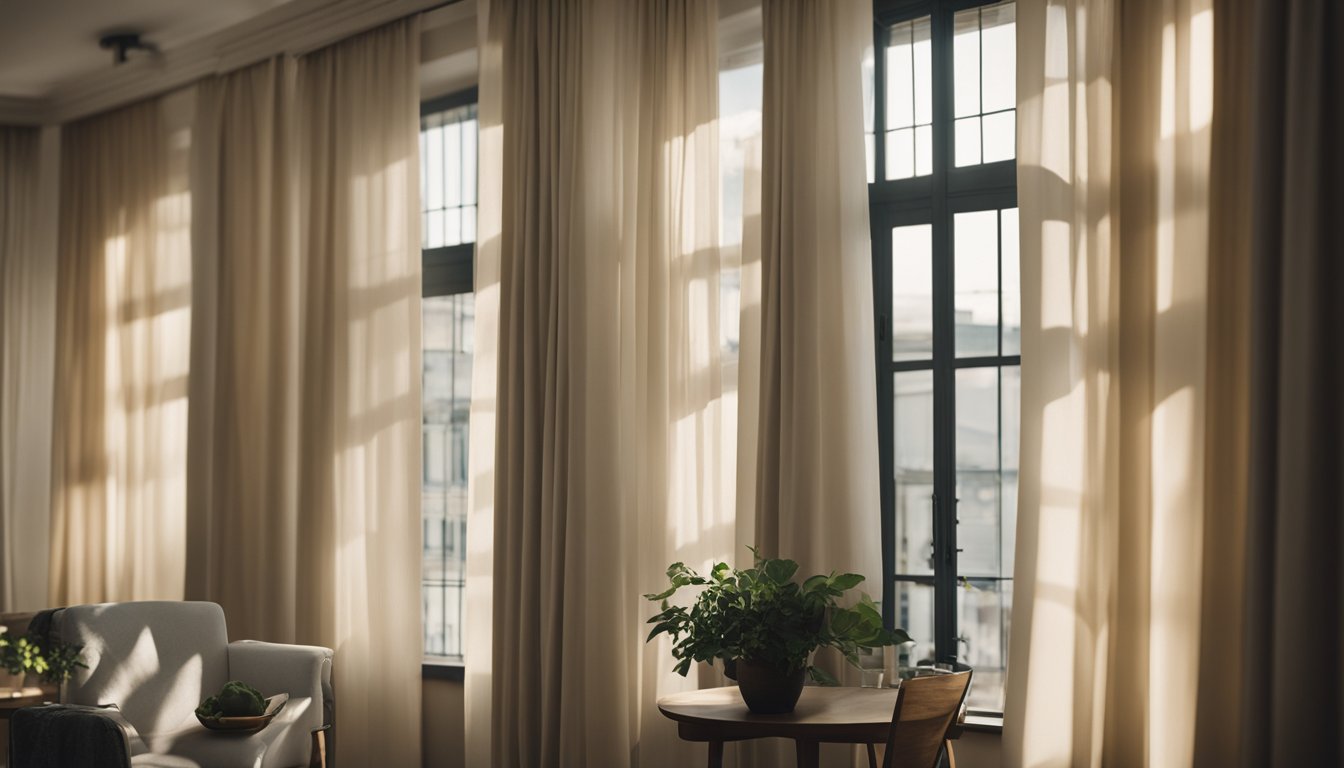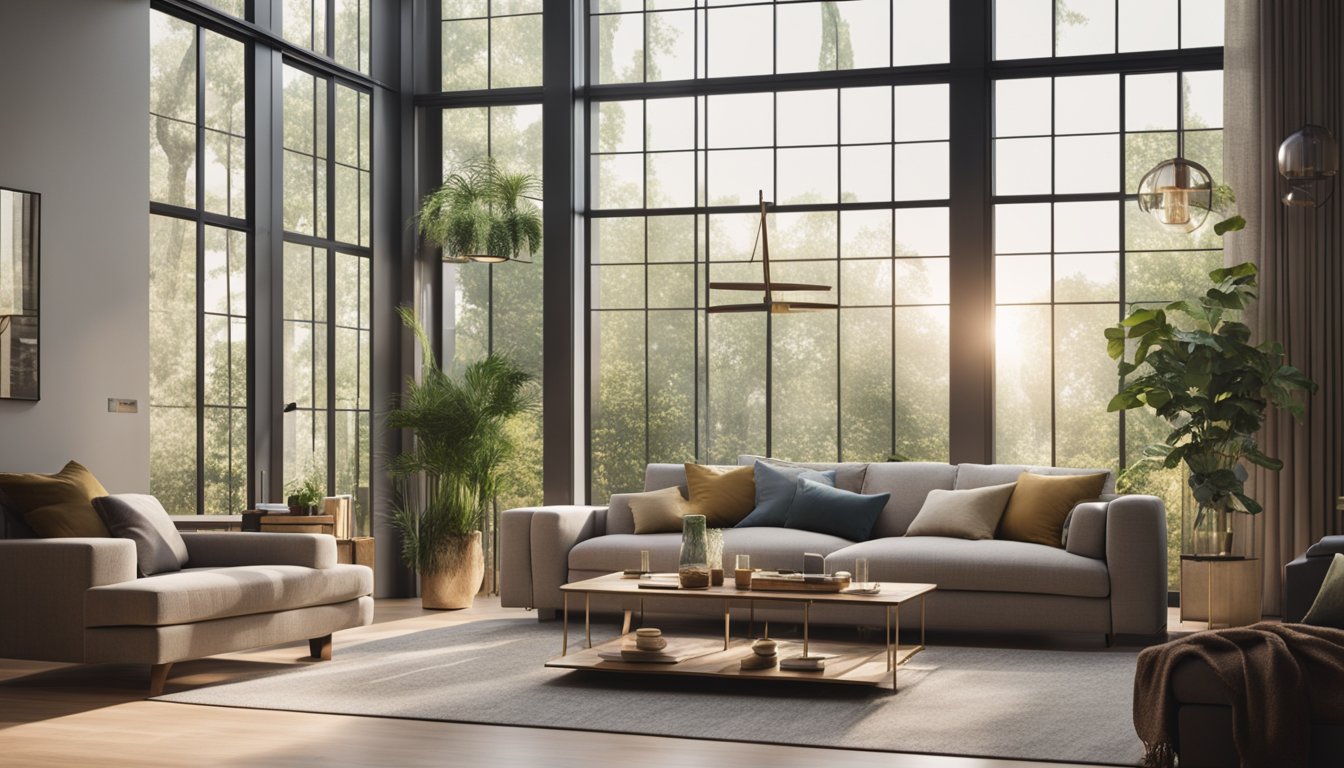Late updated: 14 Nov 2024 10:11
Written by: Daniel Harper
Creative Ways To Enhance Your Home's Natural Light: Tips for a Brighter Living Space
Bringing more natural light into our homes is not just about enhancing aesthetic appeal, but it's also beneficial for our well-being. Light, airy spaces can significantly improve our mood and energy levels, transforming living areas into inviting environments. By using clever design tactics and small changes, we can significantly boost daylight inside our homes with minimal effort and cost.

From transforming wall colours and choosing open window treatments to more ambitious solutions like installing light tunnels or picture windows, there are numerous creative ways to maximise natural light. A fresh coat of light-coloured paint or glossy flooring can make all the difference in reflecting sunlight throughout a room.
These thoughtful strategies not only brighten our spaces but also make them feel larger and more connected with the outdoors. Whether working with existing features or adding new elements, the goal is to capture and amplify every ray to create vibrant interiors.
Key Takeaways
- Creative designs and accessories can increase daylight at home.
- Enhancing light through paints, windows, and mirrors is effective.
- Boosting natural sunlight benefits mood and energy.
Maximising Daylight in Home Design
Incorporating as much natural light into home design enhances both aesthetic and functionality. It reduces energy consumption, promotes well-being, and creates inviting spaces.
Strategic Window Placement
In modern interior design, optimising window placement is essential. Large windows, such as picture or traditional styles, should be strategically installed where sunlight can be maximised throughout the day. East-facing windows capture morning light, ideal for areas like the kitchen or living room. South-facing windows are effective for maintaining consistent natural light.
For areas where windows can't be added, skylights or solar light tubes offer excellent alternatives. They channel daylight into otherwise dark spaces, like hallways or bathrooms. French doors and glass doors can also increase the light flow between indoor and outdoor spaces.
Embracing Open Space
Creating an open floor plan is an effective method to enhance daylight. By eliminating unnecessary walls or partitions, we enable sunlight to travel freely across rooms. This concept not only increases light distribution but also gives smaller spaces a more expansive feel.
For those not ready for structural changes, utilising reflective surfaces can help. Mirrors, glass table tops, and metallic finishes bounce light around the room, boosting the brightness. Incorporating these into our home design aids in making spaces feel more open and inviting.
Selecting the Right Materials and Colours
Choosing the right materials and colours is vital to enhancing daylight. Light colours, such as whites and pastels, reflect more light than darker hues. Using white walls, light-coloured flooring, and furniture can significantly brighten a room.
Reflective materials, such as glossy finishes, also help by amplifying the existing light. For example, a light-coloured worktop in the kitchen not only serves a practical purpose but also reflects sunlight, reducing the need for artificial lighting. Integrating these materials and colours ensures our spaces remain bright, energy-efficient, and cost-effective.
Enhancements and Accessories to Amplify Natural Light

To amplify natural light within our homes, strategic enhancements and accessories can make a significant difference. Employing mirrors, installing alternative daylight sources, and opting for optimal window treatments are effective methods to enhance illumination. Let's explore these strategies to transform our spaces.
Using Mirrors and Reflective Accents
Mirrors aren't just for decoration—they're powerful tools for multiplying light. Placing mirrors opposite windows can double sunlight penetration by bouncing the rays throughout the room. Reflective tiles and metallic surfaces, like stainless steel or polished chrome, can further enhance this effect.
Incorporating glass or mirrored furniture adds style and functionality, boosting brightness. Small details, such as a strategically placed mirrored tray or reflective artwork, can subtly increase light levels. With these elements, we create a dynamic interplay of light that energises our space aesthetically and functionally.
Alternative Daylight Sources
Sometimes, structural changes better distribute daylight in our homes. Solar tubes, also known as tubular daylighting devices or sun tunnels, channel exterior light into darker rooms, creating brighter interiors without electrical lighting. These features can be especially beneficial in enclosed or windowless areas.
Another option is to install light shelves beneath windows. These horizontal surfaces catch and reflect daylight deeper into rooms, reducing glare while enhancing illumination. For those with high ceilings, skylights can be an elegant solution that maximises natural light in living or working spaces. This allows us to fully utilise available daylight throughout the day.
Window Treatments for Optimal Illumination
Choosing the right window treatments can boost natural light while balancing privacy and glare control. Sheer curtains, for example, diffuse harsh sunlight and reduce glare, while allowing maximum light into space. They maintain privacy without sacrificing illumination.
To prevent obstructions from blocking light, avoid heavy curtains. Consider minimalist designs and light colours for extra brightness. For windows surrounded by landscaping or houseplants, integrate curtain designs that complement the view yet allow sunlight to filter in.
By using these targeted solutions, we can ensure our homes are bathed in natural light, creating vibrant, energy-efficient living environments.
Frequently Asked Questions

In our exploration of enhancing natural light at home, we focus on practical methods to improve illumination even in challenging spaces. We consider the strategic use of mirrors, ways to accentuate small windows, techniques to simulate sunlight, and design principles to enhance brightness.
What are effective methods for increasing the amount of natural light in a dimly lit room?
To brighten a dimly lit room, we can employ lighter colours on walls and furnishings to reflect more light. Additionally, installing skylights or using light-reflective flooring can significantly enhance brightness. Where structural changes aren't possible, using airy curtains or removing obstructions near windows helps as well.
What role do mirrors play in enhancing sunlight penetration into a home?
Mirrors are excellent tools for increasing sunlight in our homes. By placing them across from windows, mirrors reflect light deeper into rooms. This not only amplifies existing natural light but also creates an illusion of larger spaces. Strategically angled mirrors can even substitute for windows in darker corners.
How can one maximise the entry of natural light in buildings with small windows?
For homes with small windows, we can choose sheer window coverings to allow more daylight. Positioning furniture away from window areas maximises light flow. Additionally, using glass doors or larger internal openings can extend light into other parts of a home. Reflective surfaces near windows also help distribute light.
What strategies can be employed to brighten a room by amplifying its natural light?
We can use varied strategies to amplify natural light. Incorporating reflective materials like gloss-finished tiles and light-coloured furnishings is effective. Arranging indoor plants can enhance natural ambience without blocking light. Additionally, keeping windows clean ensures that maximum sunlight enters rooms, brightening the interiors naturally.
In what ways can natural light be simulated indoors when windows are not present?
In spaces without windows, artificial lighting can simulate natural light. We might utilise daylight-mimicking LED bulbs that replicate the sun's spectrum. Light tubes can also channel natural sunlight from the roof, offering a practical solution. Layering lights at different heights creates an even distribution that mimics daylight.
Are there certain design principles that can boost natural illumination within a house?
Indeed, thoughtful design principles can increase natural illumination. Open floor plans allow light to travel unobstructed between spaces. Opting for surfaces with high reflectivity, like glossy paints and materials, enhances brightness. Designing layouts that maximise window angles captures more sunlight through different times of the day.
